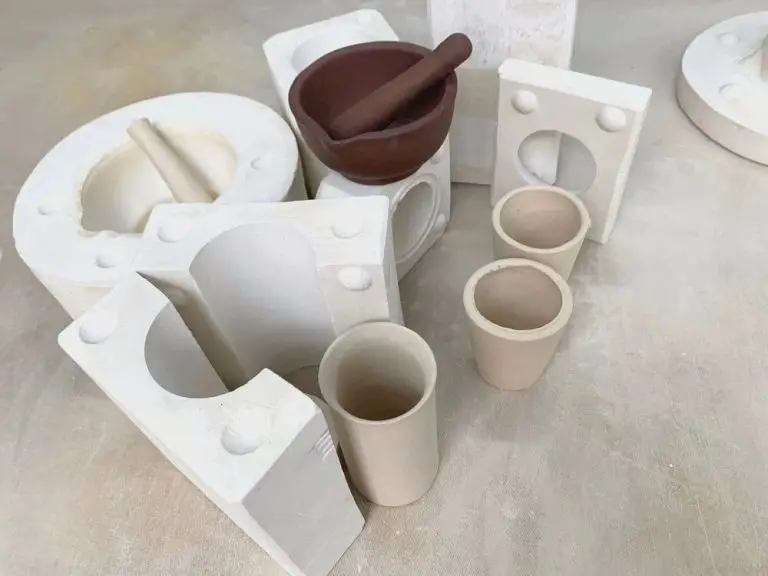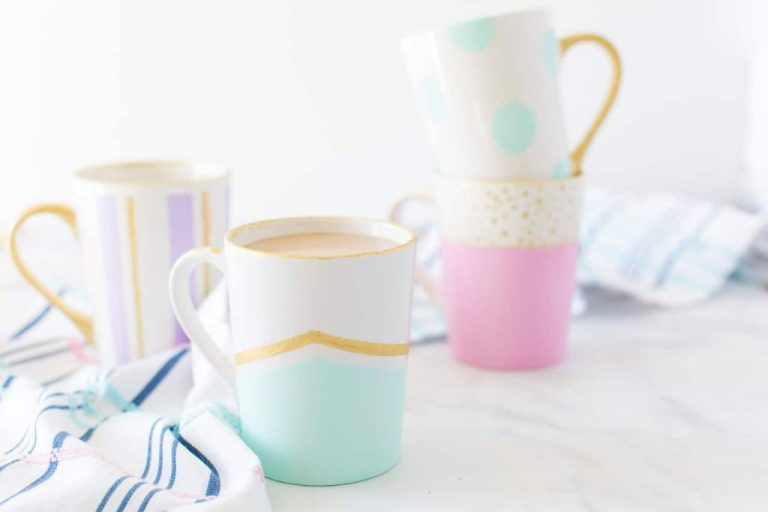Is There A Way To Rehydrate Clay?
Clay is a natural material composed primarily of fine-grained minerals like silica and alumina. When clay is mixed with water, it becomes soft and moldable. As the water evaporates, the clay “sets” and becomes firm again. This enables clay to be shaped into pottery, sculptures, bricks and other useful objects.
Over time, clay will naturally dry out and become brittle as it loses moisture. Rehydrating or remoistening clay restores its plasticity so it can be worked with again. Dried clay is often unusable for pottery or sculpture, so learning effective rehydration techniques is key for crafters and artists who work with clay.
Why Clay Dries Out
Clay is highly absorbent and porous in nature. It readily absorbs and releases moisture through capillary action. When clay is exposed to air, it naturally starts to lose its inherent moisture content as water molecules evaporate and escape from the surface of the clay body into the surrounding atmosphere. The evaporation process continues until equilibrium is reached between the moisture level in the clay and the relative humidity of the air.
Additionally, when clay is fired in a kiln, the high temperatures drive off almost all moisture locked within the clay’s microstructure. As the clay is heated during the firing process, the water molecules transition from a liquid state to a gaseous state and are released from the clay. This leaves the clay in an extremely dry and brittle condition after firing. Only a thorough rehydration process can reintroduce moisture and make the clay workable again.
Problems Caused by Dried Clay
When clay dries out and loses moisture, it becomes brittle and prone to cracking. The plasticity of the clay is also greatly reduced when dried out. This plasticity is essential for sculpting and manipulating the clay into various shapes and forms.
As clay loses its moisture, the clay particles can no longer slide over one another easily. This makes the clay much more difficult to bend, twist, and sculpt. The clay will begin to crumble and crack as you try to work it, rather than smoothly deforming into the desired shape.
The lack of plasticity prevents sculptors and artists from being able to properly work the clay. Any intricate shaping, molding, carving, or sculpting requires the clay to be malleable and responsive to applied pressure and forces. Hard, dried clay simply breaks rather than being reshaped.
For these reasons, clay drying out is problematic for potters, sculptors, model makers, artists, and anyone seeking to craft, form, or shape clay into a specific design. Maintaining proper moisture content is key to ensuring the clay remains flexible and workable.
Methods to Rehydrate Clay
There are a few effective methods to rehydrate dried out clay to restore its moisture and flexibility for sculpting and molding:
Soaking Clay in Water
The most common method is to soak clay completely in room temperature water. Submerge pre-conditioned clay in a bowl or bucket of water for at least 24 hours. Letting it soak longer, even up to a few days, allows the clay to fully absorb moisture from the outside-in. Change the water daily to prevent bacteria growth. Once fully hydrated, pat off any excess water from the surface before using.
Using Clay Rehydration Products
There are commercial rehydration products like clay softeners that can shorten the soak time. Mix an even layer of the hydrating agent into dried clay and let it sit for the instructed duration before kneading. These products introduce moisture quickly to rigid clay. Follow manufacturer’s instructions for proper usage.
Applying Moisture to Clay
For small amounts of dried clay, applying moisture directly can be effective. Use a spray bottle to spritz water across the clay’s surface then knead and fold thoroughly to distribute hydration evenly. Another option is to wrap clay in a damp cloth or paper towel, sealing in moisture. Knead repeatedly until the clay feels malleable again.
Soaking Clay in Water
One of the easiest and most effective ways to rehydrate clay is to simply soak it in water. To do this, fully immerse the clay in room temperature water in a container. Make sure the clay is completely covered and submerged. Allow the clay to soak overnight, or even longer if it’s very dried out. For severely dried clay, change the water periodically as it absorbs moisture from the clay. The water will become cloudy as it draws out salts and other substances from inside the clay. Replace with fresh water until the clay has reabsorbed enough moisture. Typically 12-24 hours of soaking should rehydrate clay sufficiently for use in most projects.
Using Clay Rehydration Products
Commercial rehydration gels and liquids provide an easy way to reintroduce moisture into dried clay. These products are designed specifically for rehydrating polymer clay, self-hardening clay, air-dry clay, and other types of modeling clays. Follow the manufacturer’s instructions for use.
To use a rehydration gel or liquid, first ensure the clay is free of dust and debris. Apply the rehydration product directly onto the clay according to the package directions. Spread the gel or liquid evenly over the surface of the clay. Let the clay sit for the recommended time to allow the moisture to fully absorb into the clay. Typically, 15-30 minutes is needed. Reapply the rehydration product if needed until the clay is soft and workable again.
Using a dedicated clay rehydration gel or liquid helps avoid contaminating the clay with excess water or other liquids. It also provides an optimal amount of moisture to penetrate the clay. The products help restore flexibility and modeling properties to dried clay.
Applying Moisture to Clay
One easy way to rehydrate clay is to directly apply moisture to its surface. This can be done in a few simple ways:
Use a spray bottle to mist the clay. Fill a clean spray bottle with water and mist the clay lightly and evenly until it feels soft. The water will penetrate the clay gradually without over-saturating it. Be careful not to apply too much water pressure when spraying, as this can damage the clay surface.
Wrap the clay in plastic wrap or put it in a plastic bag. Adding moisture and then sealing the clay in plastic will create a greenhouse effect. The trapped moisture will soften the clay within a few hours or overnight. Just be sure not to seal wet clay tightly in an airtight space, as this can trap excess moisture.
Gently rub the surface with a wet rag. A wet rag, sponge, or paper towel can be used to moisten just the surface of the clay if you don’t want moisture penetrating too deep. Wipe the clay gently to evenly distribute moisture without damaging the surface.
Ensuring Proper Rehydration
Once you have attempted to rehydrate clay, it is important to ensure that the clay has been fully rehydrated before using it. There are a couple key things to look for:
Clay should become pliable. If areas of the clay are still brittle or crack when bent or stretched, it needs more time to soak and absorb moisture. Pliability is a good indicator that moisture has been absorbed throughout the body of the clay.
There should be no cracks or brittle areas. Check the clay thoroughly by stretching and folding it. If at any point it begins to crack or break apart, that is a sign that moisture has not penetrate that area fully. Let it soak longer until the clay moves and bends without cracking.
If the clay meets these criteria – becomes stretchy/pliable without any cracking – then it has been properly rehydrated and is ready to use for any clay project. Taking the time to ensure thorough rehydration will give you better long term results in your claywork.
Storing Rehydrated Clay
Proper storage is important for keeping rehydrated clay moist. Here are some tips:
Wrap in plastic to retain moisture – Wrap blocks or slabs of clay in plastic wrap or place in a sealed plastic bag. This prevents moisture from evaporating. Plastic helps lock in the moisture.
Keep in airtight container – Store rehydrated clay in a container with an airtight lid. Tupperware or plastic containers work well. The airtight seal prevents moisture loss.
Store at room temperature – Avoid extreme high or low temperatures when storing hydrated clay. Room temperature around 70°F is ideal for maintaining even moisture levels.
Maintaining Clay Moisture
Once your clay is rehydrated, it’s important to take steps to maintain its moisture level so it doesn’t dry out again. Here are some tips for keeping clay moist:
Keep clay covered when not in use – Clay dries out quickly when exposed to air. When you’re not actively working with your clay, make sure to store it in an airtight container or plastic bag. Tightly wrap or seal leftover clay so no air can get to it.
Mist with water as needed – If your clay starts to stiffen up while you’re working with it, give it a light misting with water from a spray bottle. This will add a bit of moisture back in without making the clay overly wet.
Use clay humidifiers – You can buy specialty clay humidifiers that are designed to maintain an ideal humidity level for clay storage. Placing your wrapped clay inside an airtight container along with a clay humidifier will keep it conditioned for longer.



